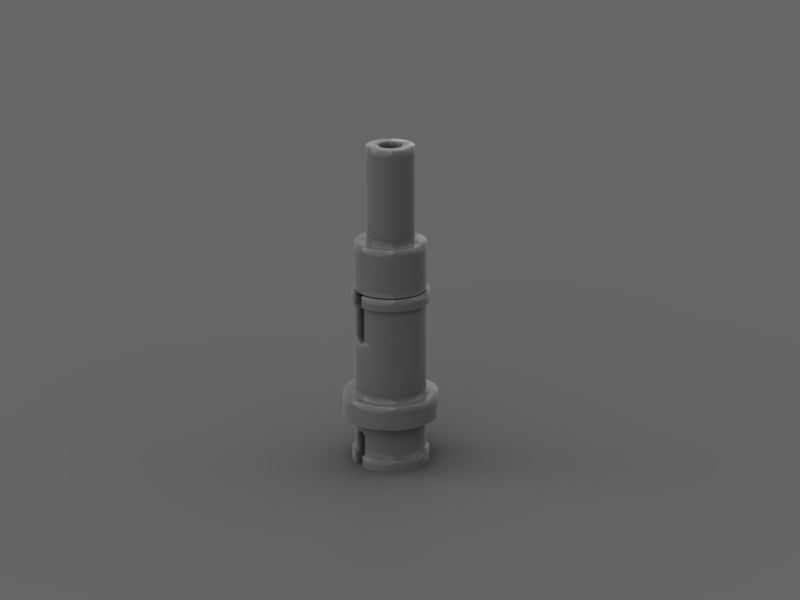
LEGO Designer:
Dan Fallon (phreaddee)
Designed:
March 2024
Categories:
Suborbital and Sounding Rockets
Launch Vehicle Details
Stages:
Length:
Diameter:
Mass at Launch:
Low Earth Orbit Capacity:
Total Thrust:
Apogee:
Class:
In 1933, after months of rigorous experimentation with rocket engines on a static test bench in Kummersdorf, a team of engineers led by Wernher von Braun embarked on the creation of their first complete rocket. To maintain military secrecy, this rocket was named Aggregat-1 (A-1).
The A-1 rocket was equipped with the innovative 2B.2 engine, a design refined through extensive testing to optimize the shape of the combustion chamber. Like other engines in the B-series, it featured regenerative cooling, where the fuel circulated through a cooling jacket around the combustion chamber to prevent overheating. The rocket carried 85 pounds of propellant, delivered to the combustion chamber via nitrogen-pressurised tanks.
In an unconventional design choice, the combustion chamber was positioned within the fuel tank. While some sources suggest this arrangement aimed to reduce the vehicle’s length, it was likely intended to improve thermal regulation. This innovative approach was developed under contract with the German army.
To ensure stability during flight, the team proposed spin stabilisation, a technique commonly used in artillery. However, spinning the entire vehicle was impractical, as the centrifugal force would disrupt the liquid propellant flow. To overcome this, the rocket was fitted with an 85-pound rotating nose cone, which maintained stability without affecting the propellant system.
Von Braun subcontracted the gyroscope development to Kreiselgeräte GmbH, led by Johannes Boykow, a naval officer renowned for his expertise in gyroscopes and control systems. Boykow, who had long anticipated such a challenge, developed a gyroscope powered by a three-phase current motor. Before launch, the motor spun up to 9,000 rotations per minute, with inertia driving the system during the rocket’s brief ascent.
Von Braun’s notes from 1932 reveal his visionary thinking about advanced flight control systems, including gyro controls, jet vanes, actuators, feed pumps, and cut-off mechanisms, though these innovations were deferred for later rocket designs.
The A-1 was designed to launch from a specialised rack, possibly angled for trajectory control rather than vertical flight.
Despite the ambitious design, the A-1 rocket faced significant challenges. Historical accounts suggest the rocket never achieved a full launch. Von Braun described a single attempt where, within half a second of ignition, the rocket disintegrated. The cause was identified as delayed ignition, which triggered an explosive mixture in the combustion chamber.
This test was a static firing rather than a full flight test, as the rocket’s range exceeded Kummersdorf’s boundaries. Von Braun later stated that a second A-1, with improved ignition systems, might have succeeded. However, other design issues, such as the rocket’s nose-heavy configuration, necessitated a redesign. The centre of gravity was too far forward, compromising stability. To address this, engineers proposed relocating the gyroscope to the rocket’s centre, between the fuel and oxidiser tanks.
This redesign led to the creation of the A-2 rocket, marking a significant step forward in the evolution of rocket technology.
Part count: bricks, lots.
| Unit | width | length | height |
|---|---|---|---|
| Studs | |||
| Inches | |||
| Centimetres |
No external URL provided.
Launch History information from space.skyrocket.de
Launch History information from space.skyrocket.de
Related Posts
None found

